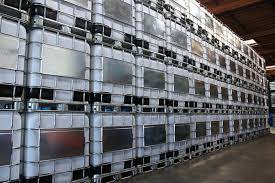Cut Waste, Boost Flow: Lean Boot Camp Offers Game-Changing Tools
 This week, nearly 70 manufacturing professionals joined MAGNET for a full-day Lean Manufacturing Boot Camp, a hands-on experience designed to build both knowledge and practical skills in Lean methods. The energy in the room was clear: manufacturers from across the region came ready to learn, test ideas, and take home strategies to immediately strengthen their operations.
This week, nearly 70 manufacturing professionals joined MAGNET for a full-day Lean Manufacturing Boot Camp, a hands-on experience designed to build both knowledge and practical skills in Lean methods. The energy in the room was clear: manufacturers from across the region came ready to learn, test ideas, and take home strategies to immediately strengthen their operations.
The day started with 5S workplace organization, where participants walked through real-world case studies showing how simple steps can transform cluttered, unsafe workspaces into organized, efficient environments. Photos of before-and-after improvements—like removing rusted racks, red-tagging excess inventory, and setting clear addresses for tools—illustrated how “a place for everything and everything in its place” isn’t just a slogan, but a system that improves safety, reduces downtime, and makes problems visible before they become costly.
Next came Value Stream Mapping (VSM), which challenged participants to dig beneath the surface of their processes. Using mapping icons and real-world factory examples, they observed how bottlenecks—such as excessive inventory piles, waiting time between operations, or unnecessary part transportation—create waste that drains productivity. By drawing both current and future state maps, participants learned how to calculate lead time, takt time, and cycle times, giving them a blueprint for cutting delays and aligning production to customer demand.
The training also explored plant layouts and flow efficiency. One exercise compared a “before” spaghetti diagram of a traditional layout, where operators walked long distances just to complete basic tasks, with a redesigned Lean cell that drastically reduced wasted motion. The contrast showed how small layout shifts can create smoother flow, shorten travel distances, and boost overall throughput.
During the session on Standard Work, attendees learned that consistency is the bedrock of improvement. They practiced breaking down tasks into their smallest observable elements with time observation sheets, uncovering sources of variation that might otherwise go unnoticed. For example, by documenting each step of loading and unloading parts, participants can identify where wasted movement occurs and how standardizing the “best known way” not only reduces errors but also facilitates faster and easier training of new employees.
Trainers shared examples of past Kaizen events where teams made dramatic improvements in just a few days. In one case, a company reduced machine setup time by reorganizing tools onto a mobile hardware cart, labeling bins, and introducing point-of-use storage. What used to take nearly 50 minutes was reduced to 30, with added safety improvements and fewer opportunities for error. Another example demonstrated how numbering die racks and creating a simple labeling system helped operators quickly locate the correct tooling, thereby eliminating confusion and reducing wasted search time. These stories brought home the message that Kaizen isn’t just about fixing problems—it’s about creating a culture where everyone looks for better ways to work, every day.
By the end of the boot camp, participants left not only with practical tools, but with a purpose of building workplaces that are safer, smarter, and more competitive. Lean is more than a set of techniques; it is a way of thinking that empowers people at every level to solve problems and eliminate waste.




